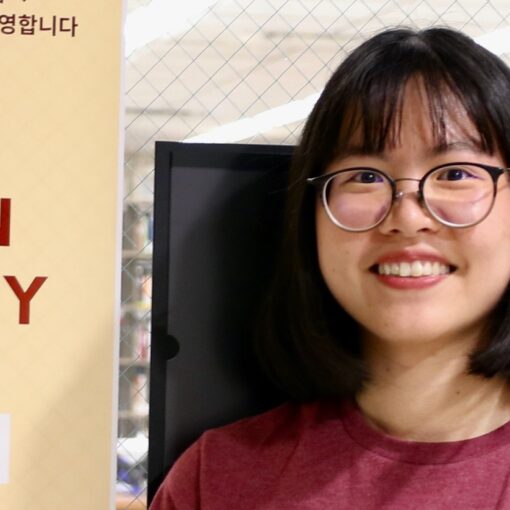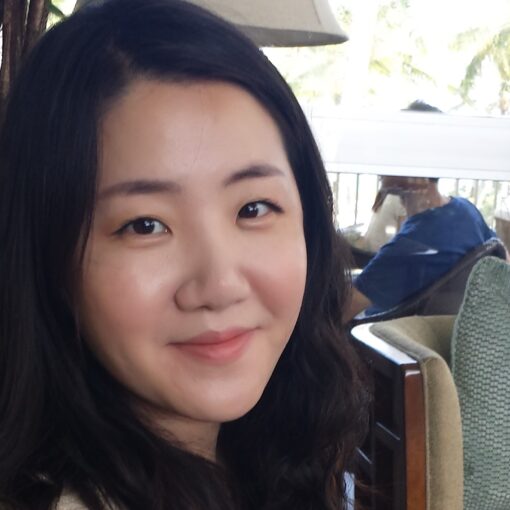 Dr. Matthew Hayes (he/him/his) is the Librarian for Japanese Studies and Asian American Studies at Duke University. He has been in this position for about one year.
Dr. Matthew Hayes (he/him/his) is the Librarian for Japanese Studies and Asian American Studies at Duke University. He has been in this position for about one year.
How did your journey in working with East Asian libraries and collections begin? Were there any opportunities that encouraged you to step into the East Asian Studies Librarianship?
My first exposure to work as a librarian was during the summer of 2016. I was a graduate student at UCLA and was preparing to leave for Japan for my dissertation research. I approached UCLA’s Japanese Studies Librarian and asked about summer work in the stacks and she agreed. I assumed that she would assign me very simple tasks during that summer, but she instead asked me to help organize, thematize, and gather metadata on the Toganoo Collection, which is a collection of Edo period (1603-1868) Japanese Buddhist texts belonging to the esoteric Shingon school. This was such a thoughtful assignment as these materials were tied directly to my research and, in fact, one item from that collection went on to play a crucial role in one of my dissertation chapters. The curtain was pulled back for me that summer and I was able to better understand how many of the primary sources necessary to my own research eventually arrived to UCLA, and how they become classified according to sets and subsets of subject headings that affect discoverability for researchers like me.
There was another major opportunity that emerged just after I had returned from Japan. UCLA had just acquired the Buddhist Churches of America (BCA) Collection from the Japanese American National Museum (JANM), and Special Collections needed someone to process the nearly 350 linear feet of materials. I applied and got the position, and then spent the next two academic quarters opening every box and examining materials in every folder. My task was to enhance the inventory list and finding aid, and help with folder-level description, especially of materials in the Japanese language. There I learned some of the fundamental ethical principles surrounding archival collections, how rare materials enhance the distinction of a library’s holdings, and their interplay with other collections within the library.
After these experiences, I formally decided to try and position myself as a viable candidate in the library field. I continued to commit to other, smaller opportunities that allowed me to gain indirect experience, and by the time I had filed my dissertation in 2020, I was able to confidently apply to several positions. I’m very grateful for these opportunities and for the librarians and archivists who took a chance in allowing me to gain some very early experience.
What do you enjoy most about your career in East Asian librarianship so far?
At a broad level, I find it incredibly fulfilling to directly support the scholarship of faculty working on cutting-edge research in Japanese Studies. As a scholar in my own right, I understand how crucial it is to have access to the richest and most contributive resources for a project, and supporting faculty researchers in this way allows me to indirectly contribute to the field at large. I find this both exciting and intellectually rewarding. At a narrower level, I enjoy the variety of tasks that comprise each workday and this is something I had not anticipated prior to my entry into the field. From small-scale research queries and one-on-one consultations to large-scale collections development efforts and the delivery of classroom workshops, the variety of tasks keeps things interesting and dynamic. The range of day-to-day tasks also allows me to leverage my subject and language expertise in surprising ways, which feels particularly rewarding after a decade in graduate school.
What would you like to achieve/accomplish in the next 5 years?
My predecessor, Dr. Kristina Troost, helped to advance the field in truly paradigmatic ways, so it is difficult for me to think about how I can meaningfully contribute to the field as I follow in her footsteps. Over the next five years, however, I will be prioritizing developing a command and confidence in the fundamental workflows of subject librarianship. Having come from a PhD program rather than an MLIS program, this can take some time and much of my skill and understanding must be developed in-the-moment as situations arise. To counterbalance this type of learning, I would like to commit to a more formal series of trainings and workshops that might emulate some of the core training in an MLIS program.
Additionally, I would like to develop and help to support a close network of other East Asian librarians with whom I can consistently collaborate and learn from. This field, much more than academia, feels very warm and collegial and I can see that collaborative work between and across regional library networks is really the key to success. I have begun to know a few librarians and they have been incredibly kind and supportive in allowing me to be a part of their network, and I feel like this type of collegiality only advances the field in positive ways. Over the next five years, I look forward to supporting the work of these librarians in my own way and to strengthening our collective support for the scholarly community.
What excites you about the development of East Asian librarianship in the future?
I am most excited by the prospect of future, large-scale efforts to bring East Asian subject librarians, scholars, and non-specialists in direct contact with one another. Subject librarians are now entering the field from a range of backgrounds and therefore bring a range of skillsets to the role. There is a growing potential for leveraging this as bibliographic consortia widen and become more integrated to include librarians of diverse training. I would say that the same is true of the up-and-coming generation of East Asian Studies scholars, who incorporate very different methodologies and interdisciplinary approaches to their work compared to prior decades. These developments mean that both the library and scholarly fields stand to gain by leveraging their increasingly diverse makeup, and it is exciting to think about how changes within these fields can better serve non-specialists who have an interest in East Asian history and culture.
For example, for both scholars and librarians in the humanities, especially, new imperatives to public outreach seem to be emerging. While the humanities field has always endured more pressure to explain its relevance to those across disciplinary or departmental boundaries, acute and deliberate outreach—from library programming to public-facing scholarship—is now crucial to the flourishing of the field as a whole. I find this imperative to engage the general public most exciting because it introduces new opportunities to rethink the purpose and audience of programmatic library work. Engaging the general public alongside scholars not only provides librarians opportunities to explain why their work is important in areas outside of the Academy, but it also incites new interest among a younger generation of potential librarians and scholars of East Asia. Since outreach has now become a cornerstone of subject librarianship, I look forward to seeing innovative projects and platforms that take advantage of the variety of backgrounds in the library field, how they might benefit (and benefit from) scholars in collaboration and, most importantly, how the general public can best benefit from this collaboration.
Any particular professional area(s) or direction(s), ie. digital humanities, library consortia initiatives, etc. that catches your interest and that you want to further explore?
I have long been an advocate for digital methods and have spent the last two years writing for an online magazine that showcases cutting edge research on Asia using digital tools and platforms. While I have only minimal first-hand experience with a few DH platforms (Palladio, Gephi, ArcGIS), I am excited by much of the digital work happening in the DH field generally, especially by projects that propose new ways to host and annotate IIIF-supported images. As someone who spends a lot of time staring at digitized manuscripts, a greater ability to add (and crowdsource) annotations to images of manuscripts will fundamentally change East Asian textual studies. I find myself in a field comprised of very diverse backgrounds and skillsets, which means new opportunities to learn from those around me with a command over these platforms and technologies. Moving forward, I would love to become involved with projects that take risks and experiment with new ways of interfacing with digitized textual and visual materials, attempt to find new audiences (specialist and non-specialist users), or innovate with digital projects that allow for interactivity during live workshops. I am currently part of a wonderful team of librarians working on a Scalar mapping project, which I hope will do some of these things.
Tell us some fun facts about you:
I found this the most difficult question to answer and I’m not sure what that says about me! I like to draw in my spare time and find that it is really the only activity that allows me to turn my brain off. I recently invested in a nice set of ultra-fine illustration pens and have been enjoying experimenting with architectural drawing. It’s a great way to relax at the end of the day.




